TORONTO (Jan. 23) — Ultimately, when discussing his four decades as voice of the Toronto Maple Leafs, Joe Bowen gets around to the spring of 1993. We all do… any that were privileged to follow that 21–games–in–42–nights Stanley Cup challenge. Neither before nor since, in the post–1967 era, have the Maple Leafs ventured so tantalizingly close to playing for the National Hockey League title. The primary figures still roll off the tongue: Doug Gilmour, Wendel Clark, Pat Burns, Wayne Gretzky… and, yes, Nikolai Borschevsky.
Along with Bowen, and more than 20,000 others, I was in Joe Louis Arena on May 1, 1993. Covering Game 7 of the Leafs–Detroit opening–round playoff series for The FAN–1430. Just eight months earlier, we had become Canada’s first all–sports radio station; our signal would slide down the dial to the much–stronger AM–590 in February 1995. Many of the most diehard Leafs zealots figured the club had shot its bolt by failing, rather spectacularly, to put away the favored Red Wings two nights earlier — getting blown out, 7–3, at Maple Leaf Gardens. The decisive encounter, on the bank of the Detroit river, was all–but a foregone conclusion. Yet, there were the visitors, down by just a goal as regulation time ticked away; in position to deadlock the match, which Gilmour did at 17:17 of the third period… who can forget the Leaf sparkplug doing a double–take and nonchalantly raising his arms after shoveling a rebound under Tim Cheveldae?
Then came overtime. First goal wins the series. Burns deployed the Gilmour–Clark–Borschevsky line, with Bob Rouse and Jamie Macoun on defense. Initially, it appeared Rouse had knocked off the Red Wings by slapping the puck along the ice from the right point at 2:35 of the extra frame. But, Joe Bowen saw it differently. “The teams switched ends after regulation and our broadcast position was closer to the Detroit net,” Bowen remembered this week. “So, I could see that Nicki Borschevsky had slightly re–directed the shot from Rouse. That’s why it fooled Cheveldae. Those watching on TV had to view a slow–motion replay to see the tip. But, I saw it, quite clearly, when it happened. And, it’s the moment I probably remember fondest in my career with the Leafs. In fact, that entire playoff run is so vivid in my mind, even if nearly 30 years ago.”
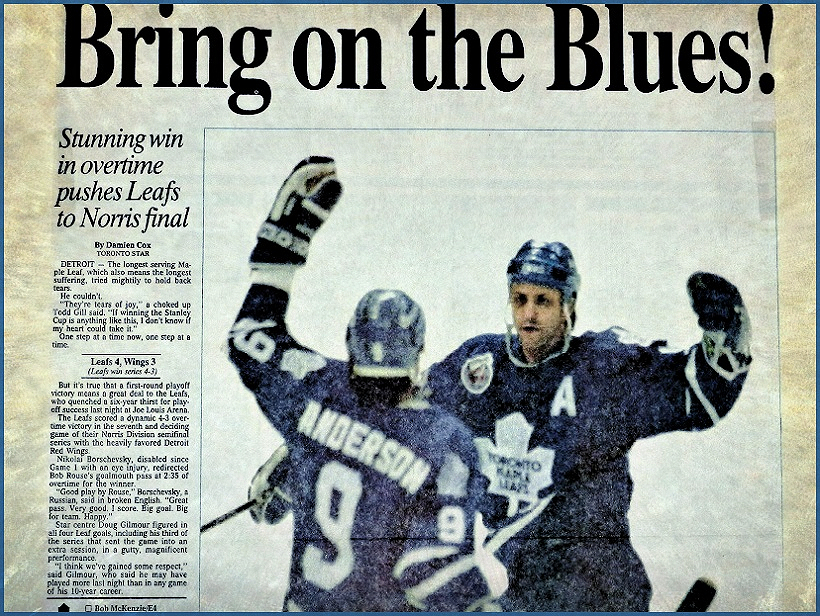
NEWSPAPER IMAGES (ABOVE AND BELOW) ON MAY 2, 1993 SAID IT ALL ABOUT THE PREVIOUS NIGHT.
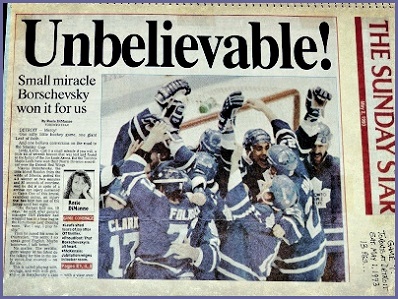
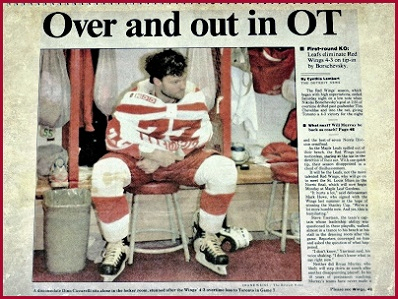
Borschevsky’s goal set up a moment not quite as imperative (at the time), but every bit as dramatic and memorable. It occurred just two nights later, at the Gardens, when Gilmour scored his behind–the–net, dipsy doodle, backhand–wraparound on Curtis Joseph at 3:16 of double–overtime to begin the Conference final against St. Louis. It also ended one of the great goaltending performances in Stanley Cup history, as Cujo blocked 62 of 64 shots against the team he would join as a free agent five years down the road. That Gilmour crafted the unwieldy winner, two nights after forcing extra time in Detroit, surprised no one.
“He was, hands down, the best player in the NHL that year,” Bowen reflected. “I know that Mario Lemieux won the Hart Trophy and he was truly phenomenal down the stretch after returning from his cancer battle. I think the American media provided him the edge in voting for the award. But, Mario didn’t do for the Penguins what Dougie did for the Leafs (Pittsburgh was upset by the New York Islanders in the second round of the Stanley Cup tournament). In the last half of that season — and over those three playoff rounds — Doug Gilmour played the best hockey of any Leaf during my years… and, dare I say, in franchise history.”
The numbers, alone, support Bowen’s claim. Gilmour, just shy of his 30th birthday, erupted for 95 assists and 127 points in 1992–93; both are still Leaf records. He added another club mark with 35 points in the 21 playoff matches. His brilliance lifted a middling team — 15–16–7 after 38 games — to a franchise record (at the time) 99 points. Between Feb. 11 and Apr. 3, 1993, the Leafs went on an 18–3–3 tear in 24 starts. It all flowed from what remains the largest trade in NHL annals: the 10–player swap with Calgary on Jan. 2, 1992 that brought Gilmour and Macoun to Toronto. “When Cliff Fletcher arrived, the franchise quickly moved from the disfunction and hopelessness of the Harold Ballard era,” Bowen said. “Cliff made the deal for Gilmour, then hired Pat Burns. It gave the team an entirely different look. The typical ‘five–year plan’ came together in less than two years. If not for that guy wearing No. 99, who knows how it may have ended.”

Indeed, it was Wayne Gretzky that did in the ’93 Leafs, though fans who remember the Conference final against Los Angeles are still hung up on Kerry Fraser. Game 6 of that series remains the most–memorable of all that I covered for The FAN–590 over 17 years. By winning at the L.A. Forum, the Leafs would advance to the Stanley Cup final against Montreal, 26 years after upsetting the Canadiens for the 1967 NHL title.
Gretzky’s long–famous high stick that sliced open Gilmour’s chin — unpunished by referee Fraser in overtime — allowed hockey’s greatest player to lift his own rebound past Felix Potvin and force a deciding seventh match at Maple Leaf Gardens, two nights later. No. 99 then turned in a vintage performance, scoring three goals and banking in the eventual winner off the skate of Leafs defenseman Dave Ellett at 16:46 of the third period. Los Angeles moved on to face Montreal and lost in five games; the Canadiens’ victory still the most–recent by a club from north of the border. For Bowen, it was an opportunity denied.
“The Leafs haven’t since been to Game 7 of a Conference final,” said the club’s iconic voice, three months shy of his 70th birthday. “I’m not sure I’ll have the chance to call a Stanley Cup series. I occasionally get frustrated and figure that whenever I retire, the Leafs will make it to the Cup final the following year. Which would also be fine. But, every time a season ends in disheartening fashion against a team like Boston, I think that it may not be in the cards. Of course, neither is it about me. The current Leafs team has more physical balance than in recent years and, therefore, an ability to push back. So, maybe there’s another chance at the end of this rather unique season. All I can say, for sure, is that it’s been one hell of a ride for almost 40 years.
“I’ve enjoyed every minute of my time as voice of the Leafs.”
MORE VINTAGE HOCKEY PHOTOS
Where They Played — Part 1
IMAGES OF FORMER NHL HOMES:
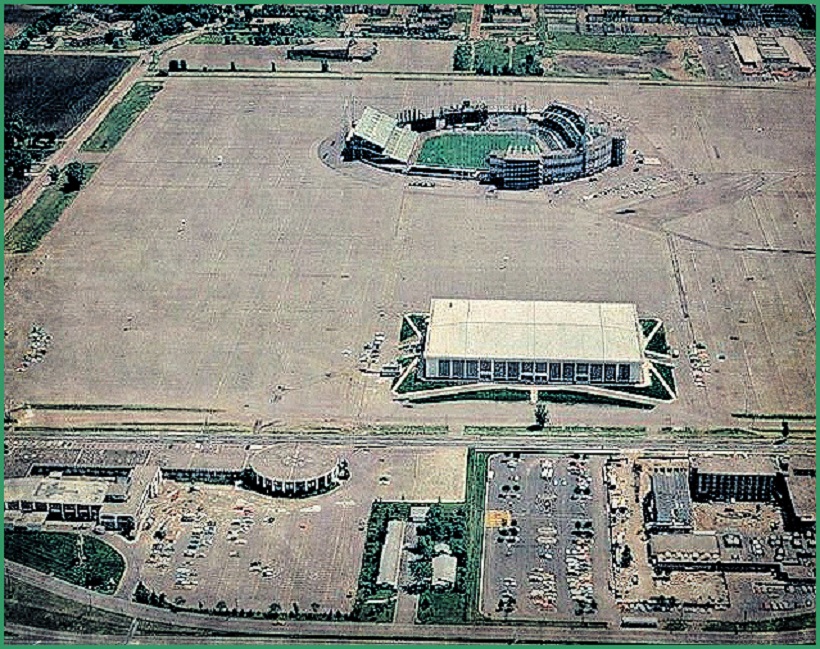
THE METROPOLITAN SPORTS CENTER (WHITE STRUCTURE) SAT ADJACENT TO METROPOLITAN STADIUM IN SUBURBAN BLOOMINGTON MINN. IT WAS HOME OF THE MINNESOTA NORTH STARS FROM 1967 TO 1993, WHEN THE FRANCHISE MOVED TO DALLAS. AT BOTTOM–RIGHT WAS THE BLOOMINGTON MARRIOTT, WHERE EVERYONE STAYED (TEAMS, MEDIA) FOR GAMES AT THE MET CENTER. THE ARENA/STADIUM SITE, TODAY, IS HOME TO THE GIANT MALL OF AMERICA.
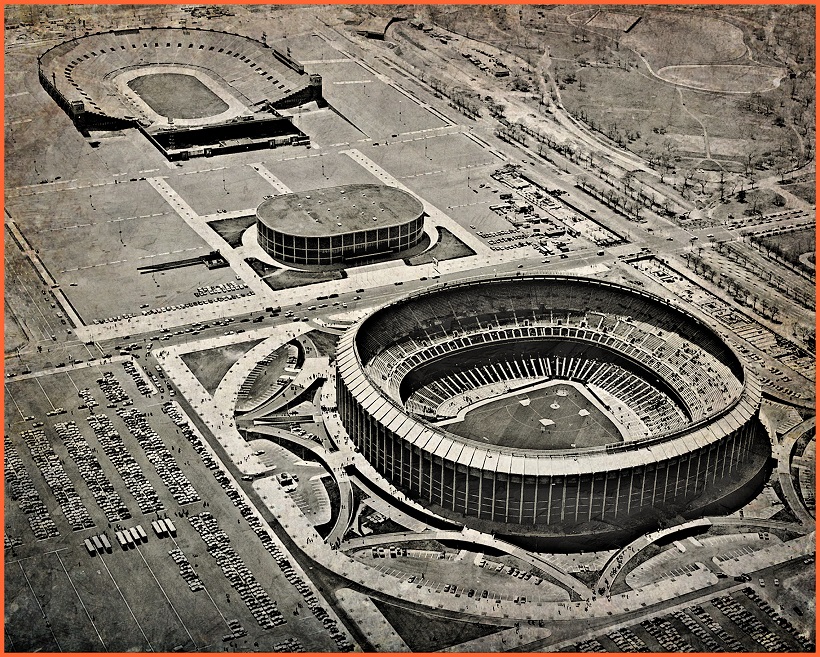
THE SPORTS COMPLEX (ABOVE) IN SOUTH PHILADELPHIA, CIRCA 1971. THE SPECTRUM (HOME OF THE FLYERS FROM 1967–96) SAT BETWEEN JOHN F. KENNEDY STADIUM (TOP) AND VETERANS STADIUM (HOME OF THE NFL EAGLES AND MLB PHILLIES FROM 1971–2003). THE FLYERS CURRENT HOME, WELLS FARGO CENTER, SITS ON THE KENNEDY STADIUM SITE.
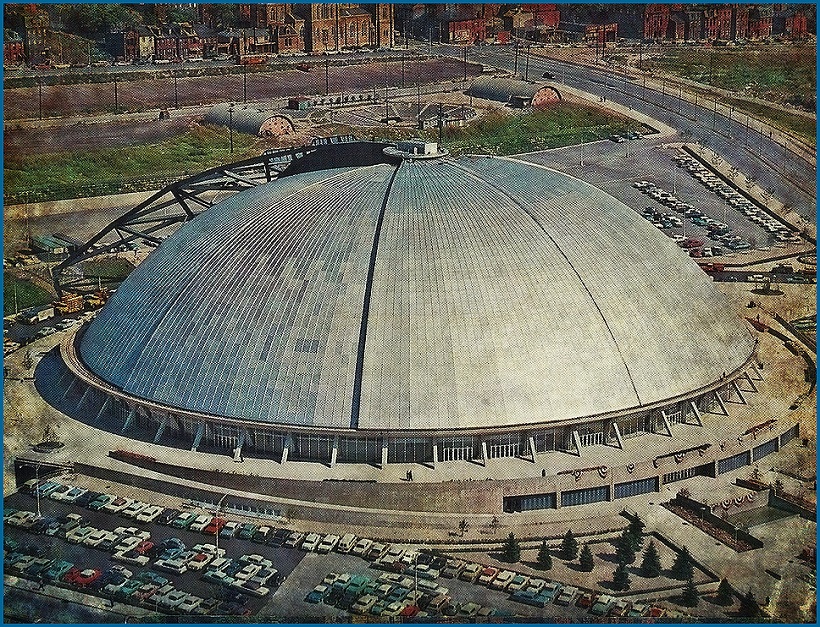
THE PITTSBURGH CIVIC ARENA (KNOWN AS MELLON ARENA, BEGINNING IN JUNE 1999) WAS HOME OF THE PENGUINS FROM 1967 TO 2009. WHILE OCCUPYING THE “IGLOO”, THE PENGUINS WON THREE STANLEY CUP TITLES… BUT, ALL ON THE ROAD (MINNESOTA 1991, CHICAGO 1992, DETROIT 2009). THE RED WINGS RAISED THE CUP AT MELLON ARENA IN 2008.
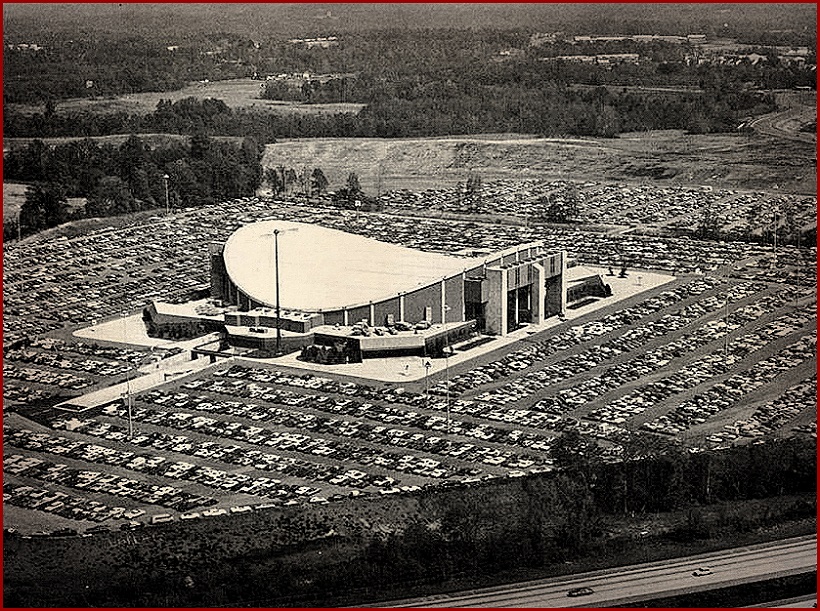
WASHINGTON’S NHL FRANCHISE PLAYED AT THE CAPITAL CENTER (ABOVE) IN LANDOVER, MARYLAND (9.2 MILES NORTHEAST OF D.C.) FROM 1974 TO 1996. TODAY, THE SITE — OFF EXIT 17 OF THE CAPITAL BELTWAY (I–495) — IS OCCUPIED BY FedEx FIELD (BELOW), HOME OF THE NFL WASHINGTON FOOTBALL TEAM (FORMERLY THE REDSKINS).
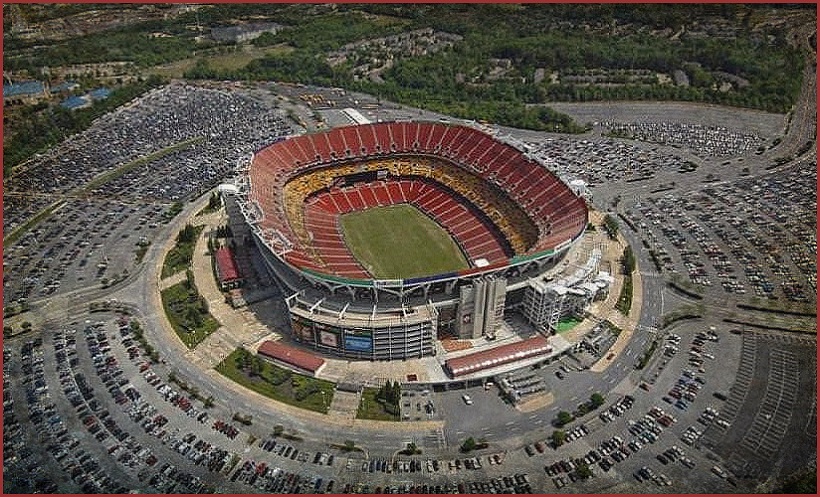

THE KANSAS CITY SCOUTS ENDURED TWO MISERABLE SEASONS (1974–75 AND 1975–76) AT CROSBY KEMPER ARENA (TODAY KNOWN AS HY–VEE ARENA), COMPILING A 27–110–23 RECORD IN 160 GAMES, BEFORE MOVING TO McNICHOLS ARENA IN DENVER AS THE COLORADO ROCKIES. SINCE 1982–83, THE ORIGINAL KANSAS CITY FRANCHISE HAS BEEN THE NEW JERSEY DEVILS. KEMPER ARENA WAS ALSO HOME TO THE NBA KANSAS CITY KINGS (1975–85), NOW THE SACRAMENTO KINGS.
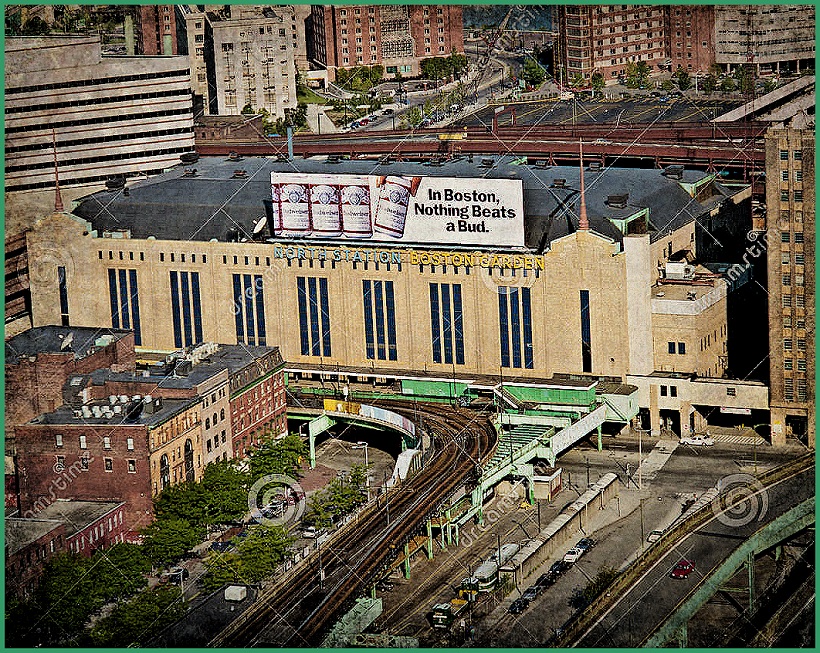
THE BOSTON GARDEN (1928–95) SAT ABOVE THE NORTH (RAILWAY) STATION. DURING SPORTING EVENTS, TRAINS COULD BE HEARD RUMBLING BENEATH. THE PLACE ROCKED IN THE EARLY–70’s, WHEN BOBBY ORR, PHIL ESPOSITO ET AL WON TWO STANLEY CUP TITLES. THE BRUINS CURRENT HOME, TD GARDEN, WAS BUILT DIRECTLY BEHIND BOSTON GARDEN.
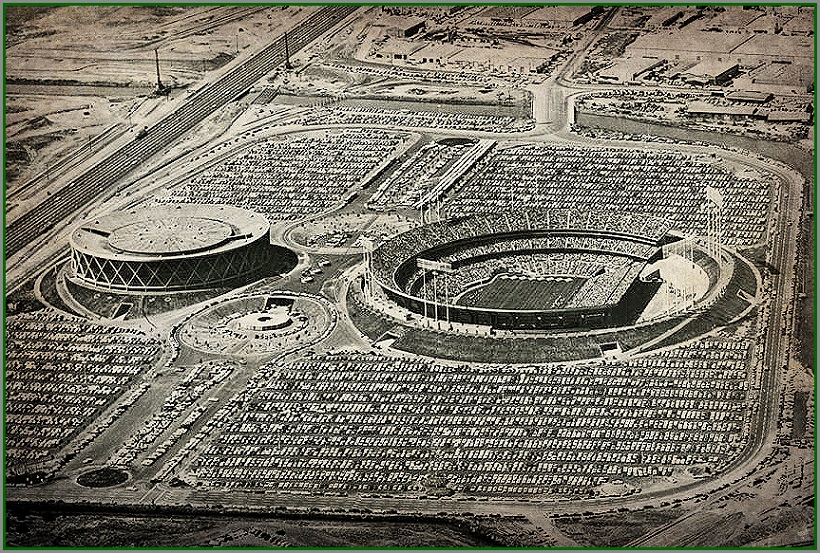
THE SPORTS COMPLEX IN ALAMEDA, CALIF. (2.2 MILES SOUTH OF DOWNTOWN OAKLAND), AS IT APPEARED IN 1967. THE CALIFORNIA SEALS (1967–76) PLAYED AT THE OAKLAND COLISEUM–ARENA (LEFT), ADJACENT TO THE COLISEUM STADIUM, FORMER HOME OF THE NFL RAIDERS… AND STILL HOME TO THE BASEBALL OAKLAND A’s. THE COLISEUM–ARENA IS TODAY KNOWN AS ORACLE ARENA. IT WAS HOME TO THE NBA GOLDEN STATE WARRIORS FROM 1971–2019. THE FINAL BASKETBALL GAME AT ORACLE WAS JUNE 13, 2019, WHEN THE TORONTO RAPTORS WON THE NBA CHAMPIONSHIP.
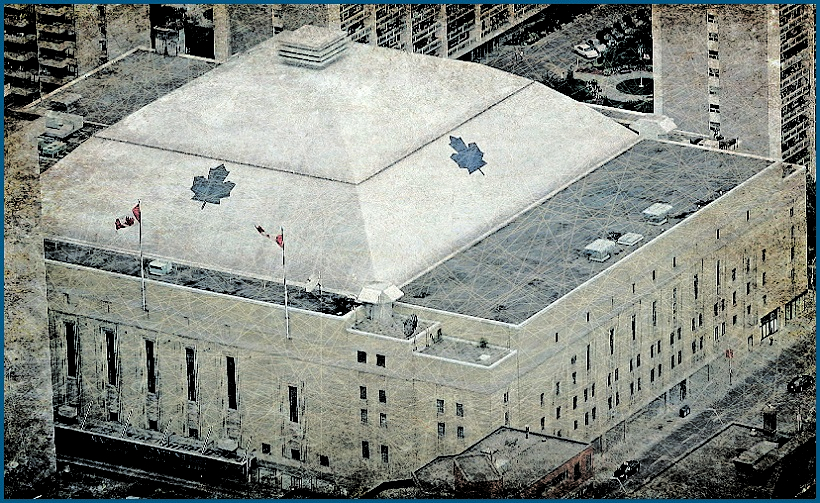
MAPLE LEAF GARDENS, HOME OF THE TORONTO MAPLE LEAFS FROM NOV. 12, 1931 TO FEB. 13, 1999.
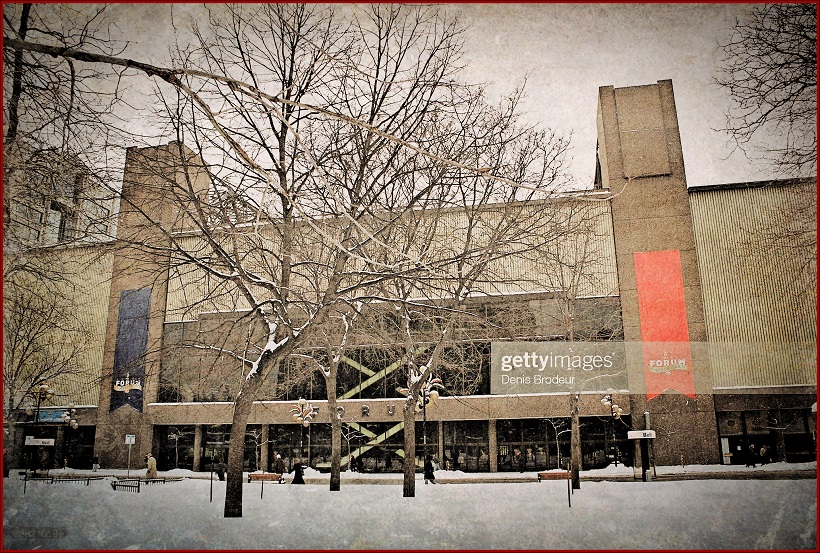
EXTERIOR OF THE MONTREAL FORUM FROM ACROSS RUE STE. CATHERINE. PAR DENIS BRODEUR.
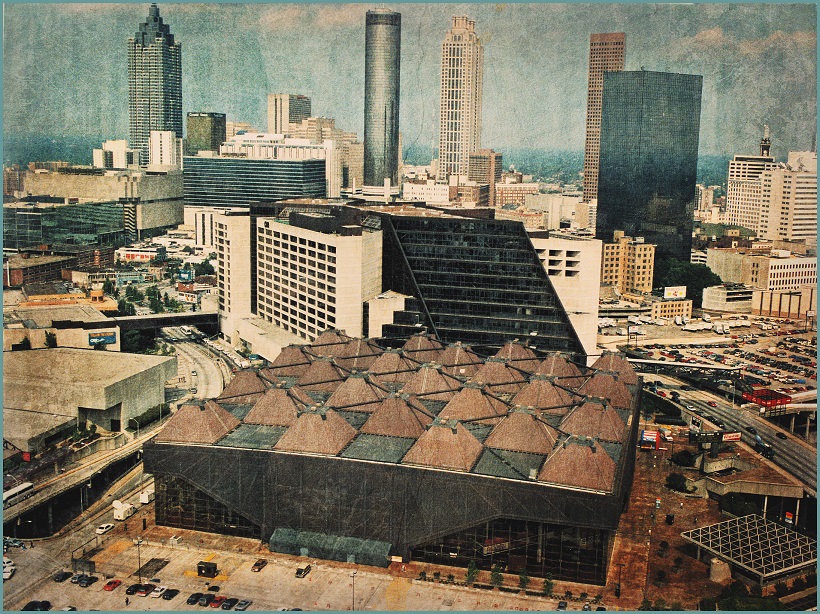
THE OMNI (BOTTOM OF PHOTO) IN DOWNTOWN ATLANTA, HOME OF THE FLAMES FROM 1972 TO 1980, WHEN THE CLUB MOVED TO CALGARY. IT WAS DEMOLISHED AFTER THE 1996 SUMMER OLYMPICS AND REPLACED, ON THE SAME SITE, BY PHILIPS (NOW STATE FARM) ARENA, WHICH HOUSED ATLANTA’S SECOND NHL CLUB, THE THRASHERS, FROM 1999 TO 2011. THE FRANCHISE IS NOW THE WINNIPEG JETS. STATE FARM ARENA IS STILL HOME TO THE NBA ATLANTA HAWKS.
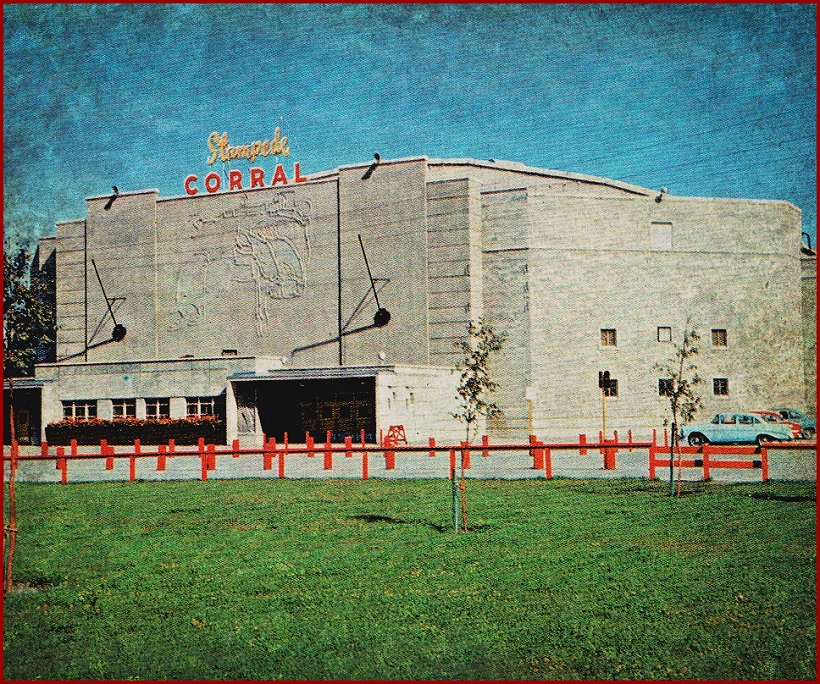
FOR THREE SEASONS, BEGINNING IN 1980–81, THE FLAMES PLAYED AT THE 7,475–SEAT CALGARY CORRAL — OPENED IN DECEMBER 1950 AND DEMOLISHED LAST MARCH. THE CLUB MOVED TO THE ADJACENT SADDLEDOME IN 1983–84.
EMAIL: HOWARDLBERGER@GMAIL.COM


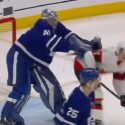
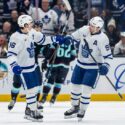
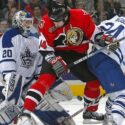
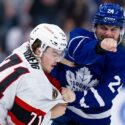
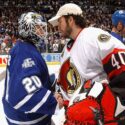





























Hi Howard. Particularly enjoyed the aerial photos of the old sports venues. I worked in all of the arenas, except two. Oakland and KC. Thanks for the memories. Cheers, Ron Asselstine